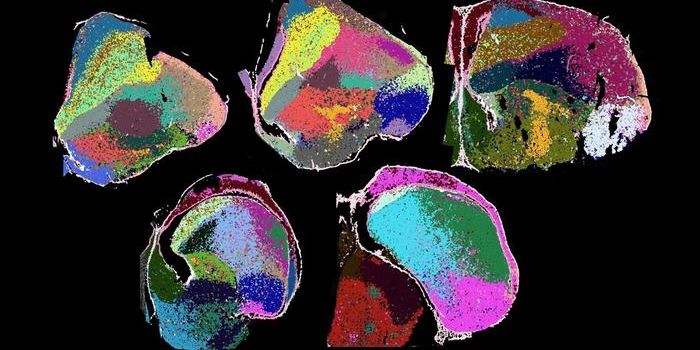In discovering that the three-dimensional shape of the cerebral cortex strongly correlates with ancestral background, researchers at the University of California, San Diego, and the School of Medicine think they may have clues that could lead to personalized medicine approaches for diagnosing and treating neurological disorders. The study, published online July 9 in Current Biology, and reported in Medical News Today, could facilitate studies of brain anatomy (http://www.medicalnewstoday.com/releases/296603.php).

Since 1953, when James Watson and Francis Crick revealed the structure of DNA, researchers figured out the genetic letters in the code without revealing what makes specific genes turn on or off at different times, in different tissue types, at different moments in a person's day or life, says a recent article in Quanta Magazine. To figure out these processes, "we must understand how those genetic letters collectively spiral about, coil, pinch off into loops, aggregate into domains and globules, and otherwise assume a nucleus-wide architecture." According to Job Dekker, a molecular biologist at the University of Massachusetts Medical School in Worcester who has built tools for unveiling genomic geometry, "The beauty of DNA made people forget about the genome's larger-scale structure. Now we are going back to studying the structure of the genome because we realize that the three-dimensional architecture of DNA will tell us how cells actually use the information. Everything in the genome only makes sense in 3-D" (https://www.quantamagazine.org/20150225-genetic-geometry-takes-shape/).
In the words of the UCSD study's senior author Anders Dale, PhD, professor of radiology, neurosciences, psychiatry and cognitive science, and director of the Center for Translational Imaging and Precision Medicine at UC San Diego, "If we can account for a large percentage of brain structure based on an individual's genes, we're in a better position to detect smaller variations in the brain that might be important in understanding disease or developmental issues." While the researchers found they could predict with "a relatively high degree of accuracy an individual's genetic ancestry based on the geometry of the cerebral cortex," they found no relationship between brain shape and functional or cognitive abilities.
"The geometry of the brain's cortical surface contains rich information about ancestry," explains the study's first author, Chun Chieh Fan, MD, a graduate student in cognitive science. "Even in the modern contemporary U.S. population, with its melting pot of different cultures, it was still possible to correlate brain cortex structure to ancestral background."
The researchers used four continental populations as ancestral references: European, West African, East Asian and Native American. They summarized genetic ancestry in each ancestral component as proportions ranging from 0 to 100 percent.
"We looked to see how well we could predict how much genetic ancestry they had from Africa, Europe and so forth," says study co-author Terry Jernigan, PhD, professor of cognitive science, psychiatry and radiology, as well as director of the university's Center for Human Development. Adding that cortex differences between various lineages were focused in certain areas, Jernigan explains, "There were various systematic differences, particularly in the folding and gyrification patterns of the cortex. Those patterns were quite strongly reflective of genetic ancestry."









